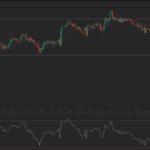 West Texas Intermediate crude is headed to a weekly loss and its European counterpart is set to record the biggest weekly decline since October amid speculations the Federal Reserve might trim its quantitative easing program next week, prompted by a recent series of upbeat economic data. Rising refined product inventories in the worlds top consumer, a possible reopening of three Libyan ports and diplomatic progress between Iran and the United States also weighed on the market. Prices however drew support on expectations that two new pipelines will begin relieving a supply glut at Cushing, Oklahoma within the next weeks, while a third one is expected to become operational in the second quarter of 2014.
West Texas Intermediate crude is headed to a weekly loss and its European counterpart is set to record the biggest weekly decline since October amid speculations the Federal Reserve might trim its quantitative easing program next week, prompted by a recent series of upbeat economic data. Rising refined product inventories in the worlds top consumer, a possible reopening of three Libyan ports and diplomatic progress between Iran and the United States also weighed on the market. Prices however drew support on expectations that two new pipelines will begin relieving a supply glut at Cushing, Oklahoma within the next weeks, while a third one is expected to become operational in the second quarter of 2014.
On the New York Mercantile Exchange, WTI crude for delivery in January traded at $97.47 per barrel at 8:23 GMT, down 0.04% on the day. Prices shifted in a days range between $97.61 and $97.34 a barrel. The US benchmark was mostly unchanged on Thursday and was down 0.3% on weekly basis on Friday.
Meanwhile on the ICE, Brent futures for settlement in January fell by 0.04% to $108.63 per barrel by 8:23 GMT. Prices ranged between session high and low of $108.86 and $108.45 per barrel, respectively. The European benchmark lost 0.9% on Thursday and extended its weekly decline to nearly 2.8% on Friday.
A recent series of upbeat economic data from the US reinforced speculations the Federal Reserve might begin scaling back its monthly bond purchases at FOMCs meeting next week. Meanwhile, the market remained pressured after the Energy Information Administration reported on Wednesday that US motor gasoline and distillate fuel inventories jumped much more than expected, indicating lingering demand in the worlds top consumer.
Speculations for an earlier-than-expected tapering were reinforced on Thursday after the Commerce Department reported that retail sales rose solidly in November as Americans purchased automobiles and a range of other goods. Retail sales rose by 0.7% last month, beating analysts projections for a 0.6% gain, while Octobers reading received an upward revision to 0.6% from initially estimated at 0.4%. The upbeat general indicator was lifted by a 1.8% jump in sales at auto and parts dealers, which offset a 1.1% decline in fuel prices.
Retail sales less autos, which exclude the volatile automobile sales, rose by 0.4% from an upward revised 0.5% a month earlier, exceeding expectations for a 0.2% advance.
Core retail sales, which exclude automobiles, food services, gasoline and building materials and correspond more closely to the consumer spending component of GDP jumped by 0.5% after advancing 0.7% in October.
The upbeat sales added to the steadily building-up positive sentiment for the US economic recovery, buoyed by a larger-than-expected third quarter growth and unemployment hitting the lowest level in 5 years. The numbers, coupled with a possible two-year budget accord that would lift the fiscal uncertainty, led more analysts to believe the Federal Reserve might actually trim its $85 million monthly bond purchases at FOMCs meeting next week.
On Wednesday, US policymakers unveiled an agreement to ease automatic spending cuts by about 60 billion USD over two years and cut the nation’s deficit by $23 billion. US Senator Patty Murray, a Democrat, and Republican Representative Paul Ryan said that the budget proposal could prevent a government shutdown when funding authority expires January 15th and could favor the economy. The agreement sets a budget ceiling for the fiscal 2014 at $1.012 trillion and $1.014 trillion for the fiscal 2015.
The FOMC’s October meeting minutes pointed that Federal Reserve officials may reduce their $85 billion in monthly bond purchases “in coming months” as the economy improves. Central bankers are set to reconvene on December 17-18th.
The Federal Reserve may begin to scale back its $85 billion in monthly asset purchases at the committee’s policy meeting on December 17th-18th rather than wait until January or March, according to 34% of economists who participated in a Bloomberg survey on December 6th. In November’s survey, 17% of respondents projected a tapering in December.
Jonathan Barratt, the chief executive officer of Barratt’s Bulletin in Sydney, said for Bloomberg: “Tapering of stimulus is seen as a hawkish maneuver. As markets look for the terminal point, tapering may damage the outlook for demand. Bulls and bears are at evens based on existing fundamentals.”
US inventories
The market also remained under pressure after an overall bearish EIA inventories report indicated lingering demand in the worlds top consumer. The Energy Information Administration reported that total motor gasoline inventories rose by 6.7 million barrels last week, sharply exceeding the median estimate of analysts surveyed by Bloomberg News for a 2.0 million increase. At 219.1 million, supplies remained above the upper limit of the average range. Meanwhile, distillate fuel inventories jumped by 4.5 million barrels last week to 118.1 million but held in the lower limit of the average range. Analysts expected a moderate 1.18 million increase. This was the biggest gain in both the product groups since January 4.
Meanwhile, the report also showed a much steeper-than-expected withdrawal in crude supplies, which however was seen as an intentional depletion by refiners to avoid tax paying when they are assessed in January, implying demand was weaker than it seemed. The government agency said that crude supplies fell by 10.6 million barrels last week, beating analysts’ projections for a 3.0 million drop, but remained above the upper limit of the average range for this time of the year.
Stockpiles at Cushing, Oklahoma, the biggest U.S. storage hub and delivery point for NYMEX-traded contracts, jumped by 625 000 barrels to 41.2 million, the highest since July 26.
Prices were however backed as two pipelines that are supposed to ease a supply glut at Cushing will become operational next month, wile a third one is expected to come online in the second quarter of 2014.
TransCanada Corp. said it began filling oil into the southern extension of its Keystone pipeline on December 7 and the company is expected to inject 3 million barrels in the coming weeks. The 700 000 bpd portion of the pipeline will relieve a supply glut at Cushing by connecting it to Port Arthur, Texas.
Meanwhile, Royal Dutch Shell advanced on Tuesday in moving a glut of light sweet oil from Texas to Louisiana after it filed tariffs with federal regulators. The pipeline should come online by the end of the year, a company spokesman said. Meanwhile, the Seaway Twin, which will move crude from Cushing to Texas, is expected to start in the second quarter of 2014.
OPEC
According to a report by tank tracker Oil Movements released on Thursday, OPEC will boost exports this month to meet rising heating demand. Shipments are expected to jump by 1.6%, or 380 000 barrels per day, to 24.14 million in the four weeks through December 28, Oil Movements said.
Meanwhile, President Barack Obamas campaign for Congress to refrain from introducing new sanctions against Iran won key support as the chairman of the U.S. Senate Banking Committee rejected tightening measures against the Persian Gulf nation, a sign the implementation of the deal is achieving progress.
In Libya, the government is set to reopen three export terminals this weekend that could bring a combined capacity of 600 000 barrels per day back online and lift the current nationwide output of 250 000 bpd.
Brigadier Idris Bukhamada, the head of the Petroleum Facilities Guard, said for Bloomberg on Tuesday that Ibrahim Al Jedran, a former regional PFG commander whose men shut off five terminals starting July 28, agreed to the resumption after intervention by the Al Magharba tribe.





